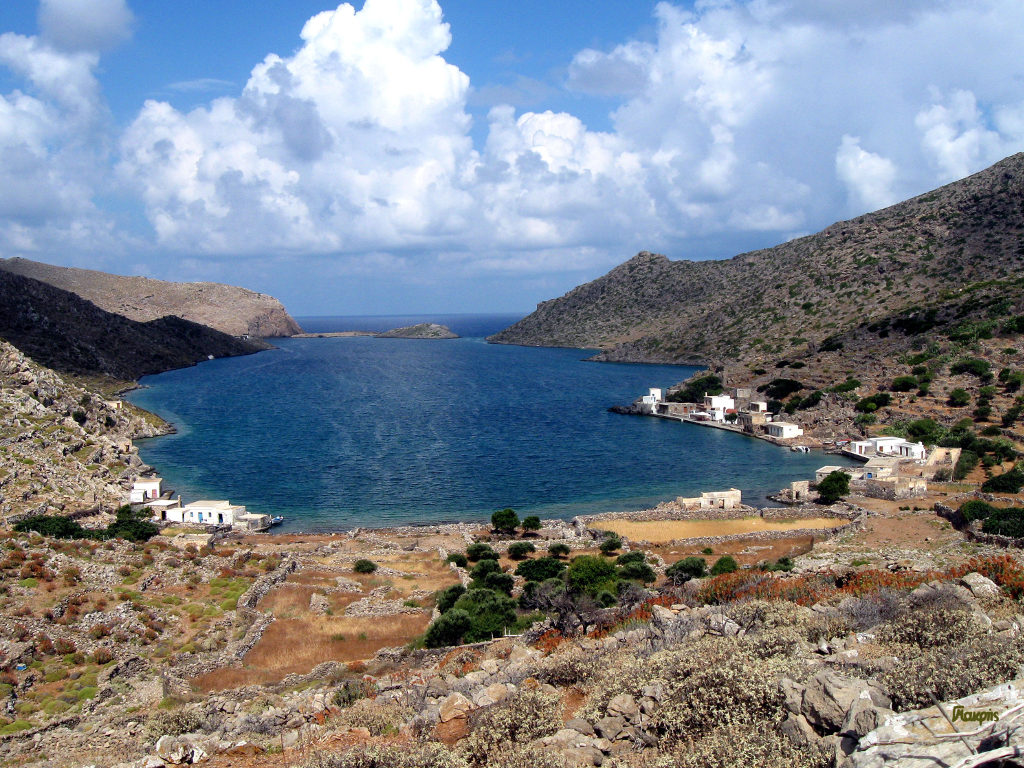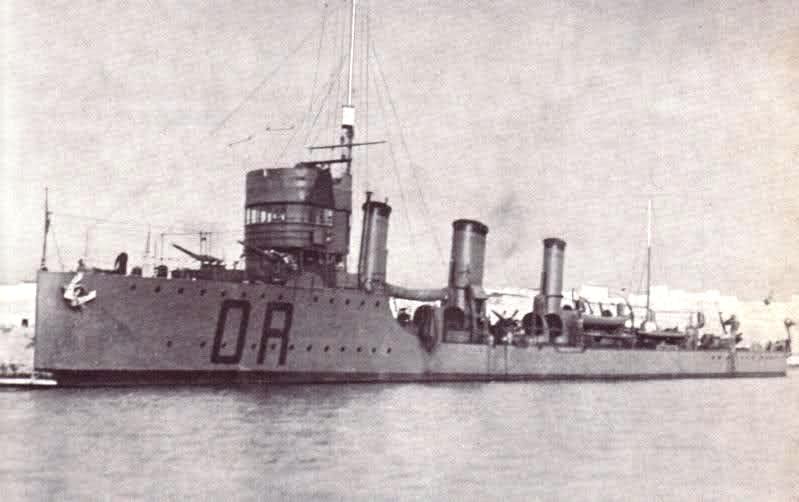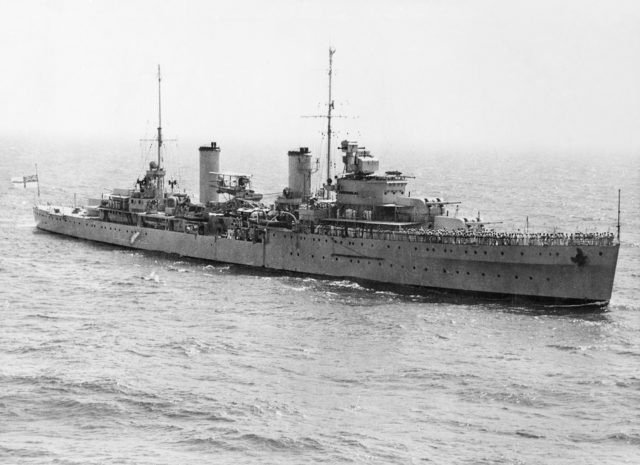Overview of the story
![]() The natural harbour of Tristomo Bay was the ideal location for the Italian naval base in Karpathos during World War II. Nicolas Hapsis was a child at the time and his family ran the local coffee shop. He and his family were the only ones who stayed in Tristomo after the Italians came and he writes quite warmly of the Italians he encountered.
The natural harbour of Tristomo Bay was the ideal location for the Italian naval base in Karpathos during World War II. Nicolas Hapsis was a child at the time and his family ran the local coffee shop. He and his family were the only ones who stayed in Tristomo after the Italians came and he writes quite warmly of the Italians he encountered.

The torpedo boat Vincenzo Giordano Orsini
Nicolas Hapsis recounts seeing the Orsini at Tristomo Bay:-
![]() “[The Italians] had eight to ten motor torpedo boats and two ships, Camolia and Orsini. Camolia was moored close to our mill. On one occasion a very strong westerly wind blew and Orsini got grounded under Dargakis’ house. Three motor torpedo boats tried to tow her off but she was stuck firm. Then two scuba divers came and dug underneath it and the motor torpedo boats tried again and freed it.”
“[The Italians] had eight to ten motor torpedo boats and two ships, Camolia and Orsini. Camolia was moored close to our mill. On one occasion a very strong westerly wind blew and Orsini got grounded under Dargakis’ house. Three motor torpedo boats tried to tow her off but she was stuck firm. Then two scuba divers came and dug underneath it and the motor torpedo boats tried again and freed it.”
The Orsini was a World War I destroyer built for the Italian Royal Navy (Regia Marina) and launched in 1917. It saw service throughout the First World War and was converted to a torpedo boat in 1929.

At some stage before Italy entered World War II in June 1940, Orsini had been sent to Massaua in Eritrea, the Italian base on the Red Sea, and appears to have remained there until she was scuttled by her crew in April 1941 after British troops invaded Eritrea.
Nicolas Hapsis’ account of the Orsini being based in Tristomo Bay would indicate that she left the Red Sea at some point, however, the Italian Wikipedia entry makes no mention of this. In addition, the Suez Canal was held by the British during the war; no Italian ship would have been allowed to pass through and it’s inconceivable that she would have taken the long way around the Cape of Good Hope, particularly given that South Africa was a British colony.
An explanation of this conundrum might be that Nicolas Hapsis is recounting seeing Orsini in Tristomo Bay before the war. Orsini was based in Libya from 1934, so she might possibly have spent time at Tristomo.
Any further information or suggestions would be welcome.
HMAS Sydney – the ‘Stormy Petrel‘
Nicolas Hapsis writes:-
![]() “There were about a thousand Italians in Tristomo, soldiers and marines, commanded by a major. They had eight to ten motor torpedo boats and two ships … I remember 4 motor torpedo boats left one day and only two returned.”
“There were about a thousand Italians in Tristomo, soldiers and marines, commanded by a major. They had eight to ten motor torpedo boats and two ships … I remember 4 motor torpedo boats left one day and only two returned.”
The accompanying note by Manolis Makris tells us:-
“This probably refers to an action on September 4th 1940. A powerful British squadron consisting of the cruiser Sydney and four destroyers bombarded Karpathos airport and caused extensive damage and many casualties. Five motor torpedo boats sailed from Tristomo to engage the Allied squadron. The cruiser had a small hydro plane that scouted for the motor torpedo boats and the destroyer Ilex was sent against them and as soon as they were in the strait between Karpathos and Kassos, Ilex hit them, sank two and damaged a third. The remaining motor torpedo boats returned to Tristomo and five bombers were sent from Rhodes to bomb the Allied vessels but they failed to hit them.”
This account is confirmed by the Wikipedia entry for HMAS (His Majesty’s Australian Ship) Sydney and gives additional details:-
“On the return voyage [to Alexandria], Sydney and several other vessels were tasked with attacking Italian facilities. Canvas and timber were used to alter the cruiser’s profile to resemble an Italian Condottieri-class cruiser, allowing her to manoeuvre close to Scarpanto (Karpathos) during the night of 3–4 September. At dawn, Sydney and the British destroyer Ilex attacked the Italian Makri Yalo Airbase at Scarpanto; the cruiser fired 135 shells in 25 minutes, while the destroyer fended off five E-boats, sinking two. On completion, the two ships rejoined the fleet, but were again mistaken for Italian warships and nearly fired on before Sydney raised the White Ensign and cut down her disguise. Admiral Cunningham congratulated Sydney with the message “Well Done. You are a stormy petrel.”, which was adopted as a nickname for the cruiser.”

The locations in the chapter
The map below shows the location of the places mentioned in the chapter and a short extract from the text from the book. Clicking on the link in the description will take you to that point in the online book. Read how to use the interactive map.
Tristomo Bay drone flight
Get a feel for Tristomo before investing in the long walk – you can always mute the soundtrack! Read how to play the YouTube video.
Video © copyright Sotiris Lekkas
Comment or contribute
 We’re always searching for more information on our stories. Do you have any comment or additional information that we might add to this story? Why not contact us and let us know?
We’re always searching for more information on our stories. Do you have any comment or additional information that we might add to this story? Why not contact us and let us know?
